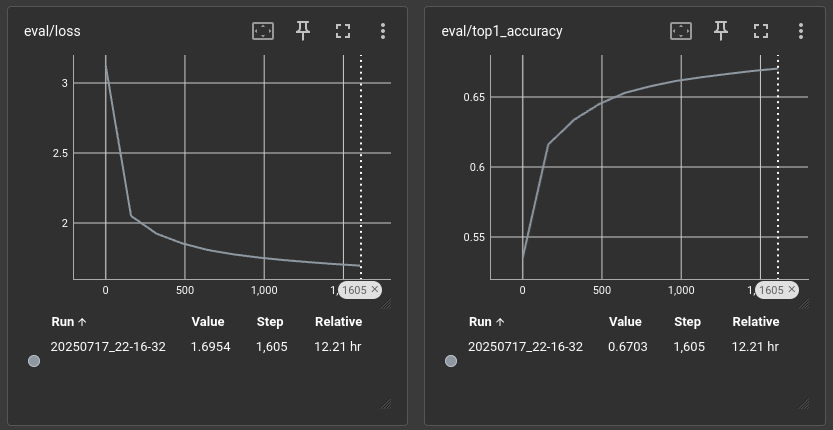A 0.6B parameter draft (speculative decoding) model for use with Kimi-K2-Instruct.
See Kimi-K2-Instruct-DRAFT-0.6B-v2.0-GGUF for the models in gguf format for use with llama.cpp.
Extending the context above 32k
The current config.json is set for context length up to 32k tokens. Add the "rope_scaling" section to config.json to enable YaRN, eg:
To extend the context to 64k:
"max_position_embeddings": 65536,
...
"rope_scaling": {
"factor": 2.0,
"original_max_position_embeddings": 32768,
"type": "yarn"
},
To extend the context to 128k:
"max_position_embeddings": 131072,
...
"rope_scaling": {
"factor": 4.0,
"original_max_position_embeddings": 32768,
"type": "yarn"
},
NOTE: Because llama.cpp uses "static-YaRN" the scaling factor remains constant regardless of input length! Only add the rope_scaling configuration when processing long contexts is required...
How this model was created
1. The initial model was created from Qwen2.5-Coder-0.5B-Instruct using transplant-vocab:
python ./transplant_vocab.py \
./Qwen2.5-Coder-0.5B-Instruct \
./Kimi-K2-Instruct-BF16 \
./Kimi-K2-Instruct-DRAFT-0.6B-UNTRAINED \
--trust-remote-code \
--override "[BOS]" "<|endoftext|>" \
--override "[EOS]" "<|im_end|>" \
--override "<|im_end|>" "<|im_end|>" \
--override "<|im_user|>" "<|im_start|>user" \
--override "<|im_assistant|>" "<|im_start|>assistant" \
--override "<|start_header_id|>" "<|im_start|>" \
--override "<|end_header_id|>" "<|im_end|>" \
--override "[EOT]" "<|endoftext|>" \
--override "<|im_system|>" "<|im_start|>system" \
--override "<|tool_calls_section_begin|>" "<tool_call>" \
--override "<|tool_calls_section_end|>" "</tool_call>" \
--override "<|tool_call_begin|>" "<tool_call>" \
--override "<|tool_call_argument_begin|>" "<tool_call>" \
--override "<|tool_call_end|>" "</tool_call>" \
--override "<|im_middle|>" "\\n" \
--override "[UNK]" "<|endoftext|>" \
--override "[PAD]" "<|endoftext|>"
NOTE: Due to the non-standard tokenizer, this needs the --trust-remote-code option.
There were still some odd looking things in the config files (compared to usual transplant-vocab outputs), so I then:
- Copied
tokenizer_config.jsonfromKimi-K2-Instructover the top of thetransplant-vocab-generated one. - Copied
config.jsonfromQwen2.5-Coder-0.5B-Instructover the top of thetransplant-vocab-generated one. - Edited
config.jsonto use:"bos_token_id": 163584,"eos_token_id": 163585and"tie_word_embeddings": false.
2. The following datasets were used to create a fine-tuning dataset of ~1.6B tokens:
formatted just between [EOS] tags.
3. The model was then trained using qlora-pipe-lite for 1 epoch with a batch size of 30 and a sequence length of 32k (~1M tokens per step):
# ==============================
# MODEL AND OUTPUT CONFIGURATION
# ==============================
model_dir = 'models/Kimi-K2-Instruct-DRAFT-0.6B-UNTRAINED'
output_dir = 'finetuned'
# ===========================
# TRAINING TYPE CONFIGURATION
# ===========================
full_fine_tune = true
# =======================
# OPTIMIZER CONFIGURATION
# =======================
lr = 2e-5
# ======================
# TRAINING CONFIGURATION
# ======================
sequence_len = 32768
gradient_accumulation_steps = 5 # 5×6 = batch size 30, 5×6×32768 = ~1M tokens per step
# =====================
# DATASET CONFIGURATION
# =====================
[[datasets]]
dataset_path = 'datasets/common-crawl-sample/*.json'
drop_tails = true
[[datasets]]
dataset_path = 'datasets/the-stack-smol-xl/*.jsonl'
drop_tails = true
NOTE: Due to the non-standard tokenizer, this needs the --trust-remote-code option passing on the deepspeed call to train.py.
I used six RTX A6000 GPUs over three nodes and hence the 30 batch size (6 x 5 gradient accumulation steps = 30).
4. Fixing the TikToken / SentencePiece tokenizer mismatch in llama.cpp
I had to temporarily hack this change into convert_hf_to_gguf.py:
@ModelBase.register("Qwen2Model", "Qwen2ForCausalLM", "Qwen2AudioForConditionalGeneration")
class Qwen2Model(TextModel):
model_arch = gguf.MODEL_ARCH.QWEN2
#def set_vocab(self):
# try:
# self._set_vocab_sentencepiece()
# except FileNotFoundError:
# self._set_vocab_gpt2()
def set_vocab(self):
from transformers import AutoTokenizer
tokenizer = AutoTokenizer.from_pretrained(self.dir_model, trust_remote_code=True)
tokpre = self.get_vocab_base_pre(tokenizer)
# Build merges list using the approach similar to HunYuanMoE
merges = []
vocab = {}
mergeable_ranks = tokenizer.model._mergeable_ranks
for token, rank in mergeable_ranks.items():
vocab[QwenModel.token_bytes_to_string(token)] = rank
if len(token) == 1:
continue
merged = QwenModel.bpe(mergeable_ranks, token, max_rank=rank)
if len(merged) == 2:
merges.append(' '.join(map(QwenModel.token_bytes_to_string, merged)))
# Build token list
vocab_size = self.hparams["vocab_size"]
special_tokens = tokenizer.special_tokens
reverse_vocab = {id_ : encoded_tok for encoded_tok, id_ in {**vocab, **special_tokens}.items()}
tokens: list[str] = []
toktypes: list[int] = []
for i in range(vocab_size):
if i not in reverse_vocab:
tokens.append(f"[PAD{i}]")
toktypes.append(gguf.TokenType.UNUSED)
else:
token = reverse_vocab[i]
tokens.append(token)
if i in special_tokens.values():
toktypes.append(gguf.TokenType.CONTROL)
else:
toktypes.append(gguf.TokenType.NORMAL)
self.gguf_writer.add_tokenizer_model("gpt2")
self.gguf_writer.add_tokenizer_pre(tokpre)
self.gguf_writer.add_token_list(tokens)
self.gguf_writer.add_token_types(toktypes)
self.gguf_writer.add_token_merges(merges)
special_vocab = gguf.SpecialVocab(self.dir_model, load_merges=False)
special_vocab.add_to_gguf(self.gguf_writer)
This then let me run:
~/llama.cpp/convert_hf_to_gguf.py --outtype auto --outfile Kimi-K2-Instruct-DRAFT-0.6B-BF16.gguf Kimi-K2-Instruct-DRAFT-0.6B
and then it quantized OK:
~/llama.cpp/build/bin/llama-quantize Kimi-K2-Instruct-DRAFT-0.6B-BF16.gguf Kimi-K2-Instruct-DRAFT-0.6B-Q4_0.gguf Q4_0 44
- Downloads last month
- 52
Model tree for jukofyork/Kimi-K2-Instruct-DRAFT-0.6B-v2.0
Base model
Qwen/Qwen2.5-0.5B